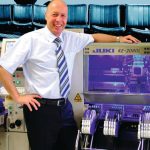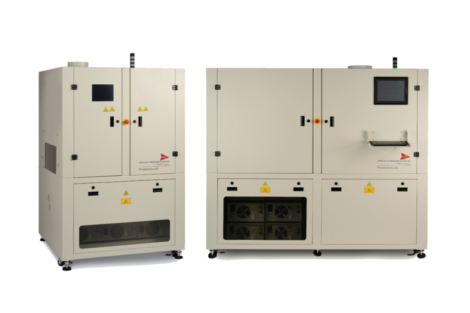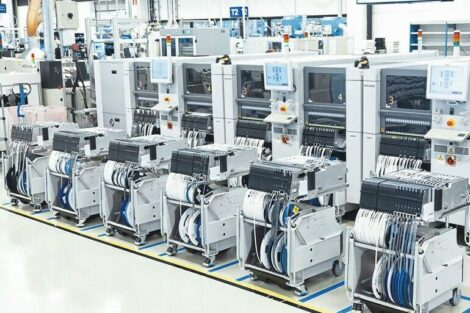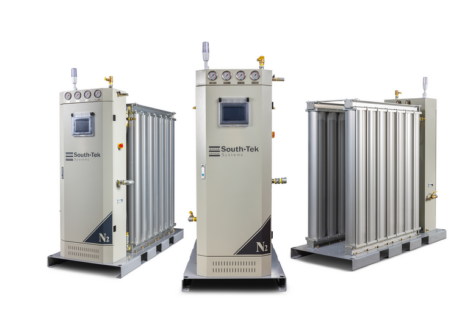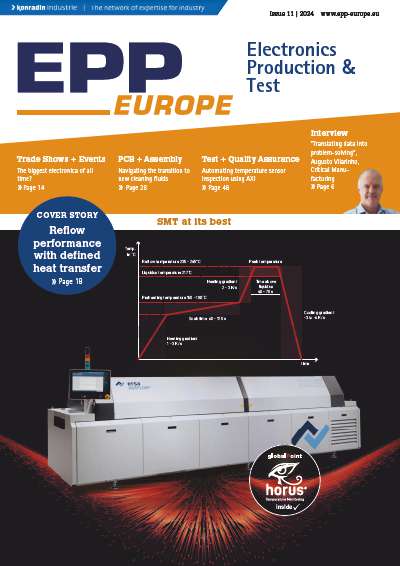In order to meet the customer’s future demands, pick and place machine suppliers know that they must offer more than just quality assembly machines. Integration of the entire production, extended automation level, even higher flexibility as well as the control of the entire production process combined with the aim to get as close as possible to a zero defect production are the big challenges for the near future. Juki presented many European and World premiering products including machines, hardware options and software tools or modules.
We talked with Juki Europe CEO Jürg Schüpbach about “Why Juki?” Do you agree with the first statement regarding the future challenges?
In today’s electronic market the margin gets smaller and smaller for our customers, especially in the EMS business. This means a production line has to be more cost effective from the initial investment through to operation and support with the minimum of manpower whilst also to producing top quality product. For example, repair work is prohibited in a wide part of automotive production, and is of course extremely expensive. Juki concentrates on the core business of the pick and place process and has been known for many years to have reduced the cost of production by regularly introducing systems with improved price/performance ratio and optimized process tools. Intelligent machine and feeder systems are a standard in today’s world and to attack above subjects we always strive to improve the systems.
What is Juki’s general strategy regarding their product portfolio for the next two years and beyond?
Juki will further expand their product portfolio. Five fully compatible product lines are currently available to cover the requirements of customers both with lower production needs and also in the high speed advanced segments. We have further expanded the portfolio too; it also covers super high speed demands as well as being able to offer some specific needs such as semiconductor, LEDs (with very long boards) and even pick and place processes not directly related to SMD. For example we will shortly introduce systems to cost effectively automate Manual Insertion of parts and processes.
Do you have any specific areas where you plan to intensify Juki’s efforts?
There are many different areas. As an example I would specifically like to mention the Sentry system; our current focus is on the integration of the Sentry system inside the pick and place process. The system was presented to the public for the first time at productronica 2011 in Munich and will guarantee a zero defect production. It is a combination of two parts. The first is the EPV system, which records picture images of the pick and place process in real time. The information is used for picture traceability and most importantly, if there is a process problem, it enables the operator to go back and check what happened during the pick and place process of a certain component and to quickly adjust it. The second part is the SIM. SIM is an integrated placement quality control system which will prevent boards with any error from being passed through to the reflow oven.
Where does Juki stand regarding R&D activities to reach the above mentioned roadmap?
We invest enormous amounts of money in our R&D and have also changed our development process. These days we work together a lot on an exclusive basis with companies who lead the market in certain areas and develop systems with them that are integrated into our concepts. One example is our close relationship with Cyberoptics Corp.
Can you give a brief statement on how Juki will succeed to be different from its competitors and what makes Juki the best choice for customers both today and in the future?
Juki offers probably the best quality systems in the market. Our track record of the highest MTBF (mean time between failures) is legendary. This led to our three year all parts warranty in Europe and America and fantastic customer satisfaction. Juki produces quality on the highest level as a matter of course. With one of the widest product portfolios a customer is able to start on a small scale and then expand their production capacity and technology in any direction. Juki always keeps compatibility with older systems. For example, the new generation machines can accept both electrical and also mechanical feeders that go back many generations. So, we offer products which are tailored to different customer needs and can be expanded with options and tools, as well as different additional modules, as a user develops and grows. When a customer chooses JUKI he will be entering into an esteemed partnership.
Jürg, thank’s for your time.
SMT Hybrid Packaging Booth 7-333
Share:




